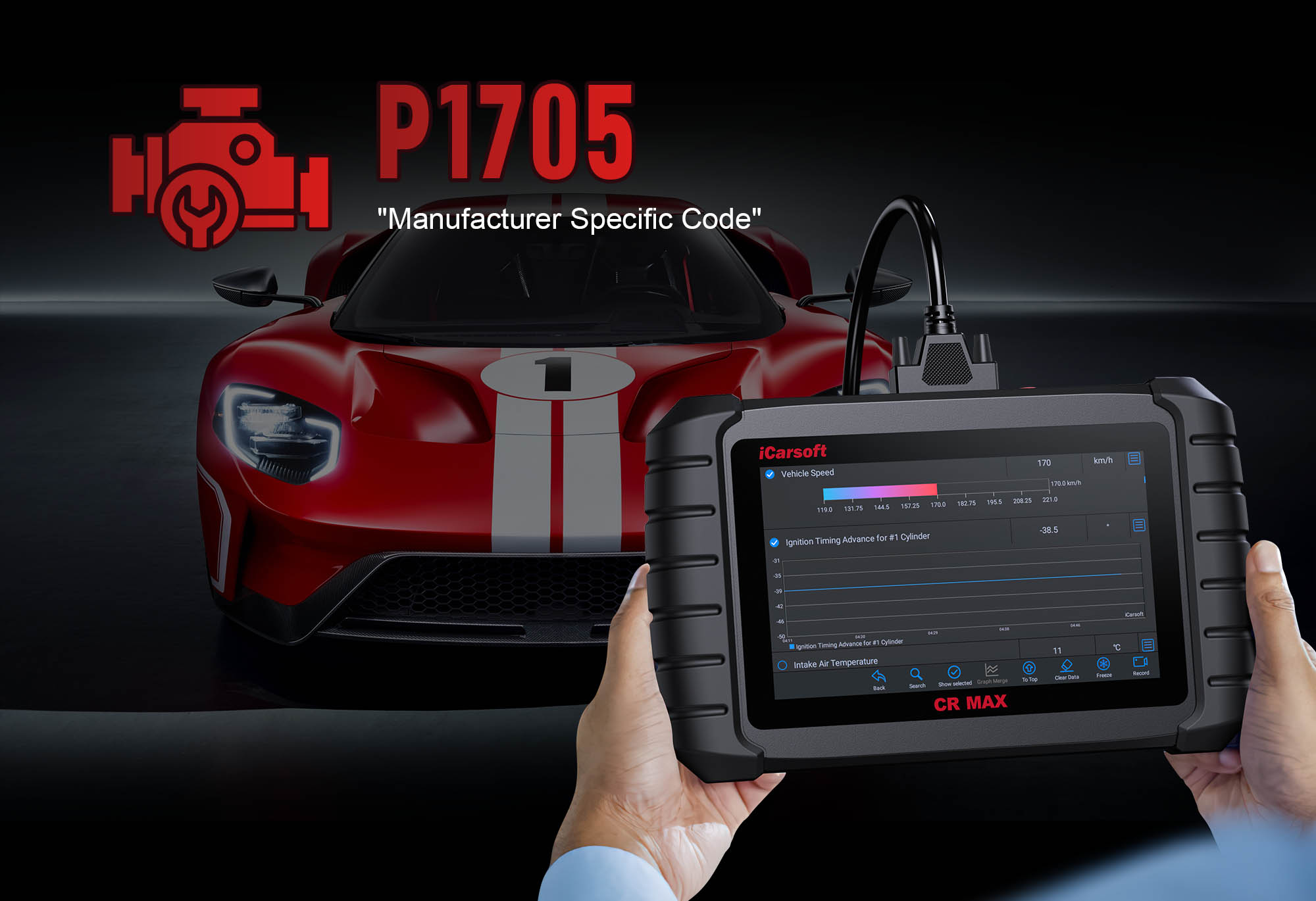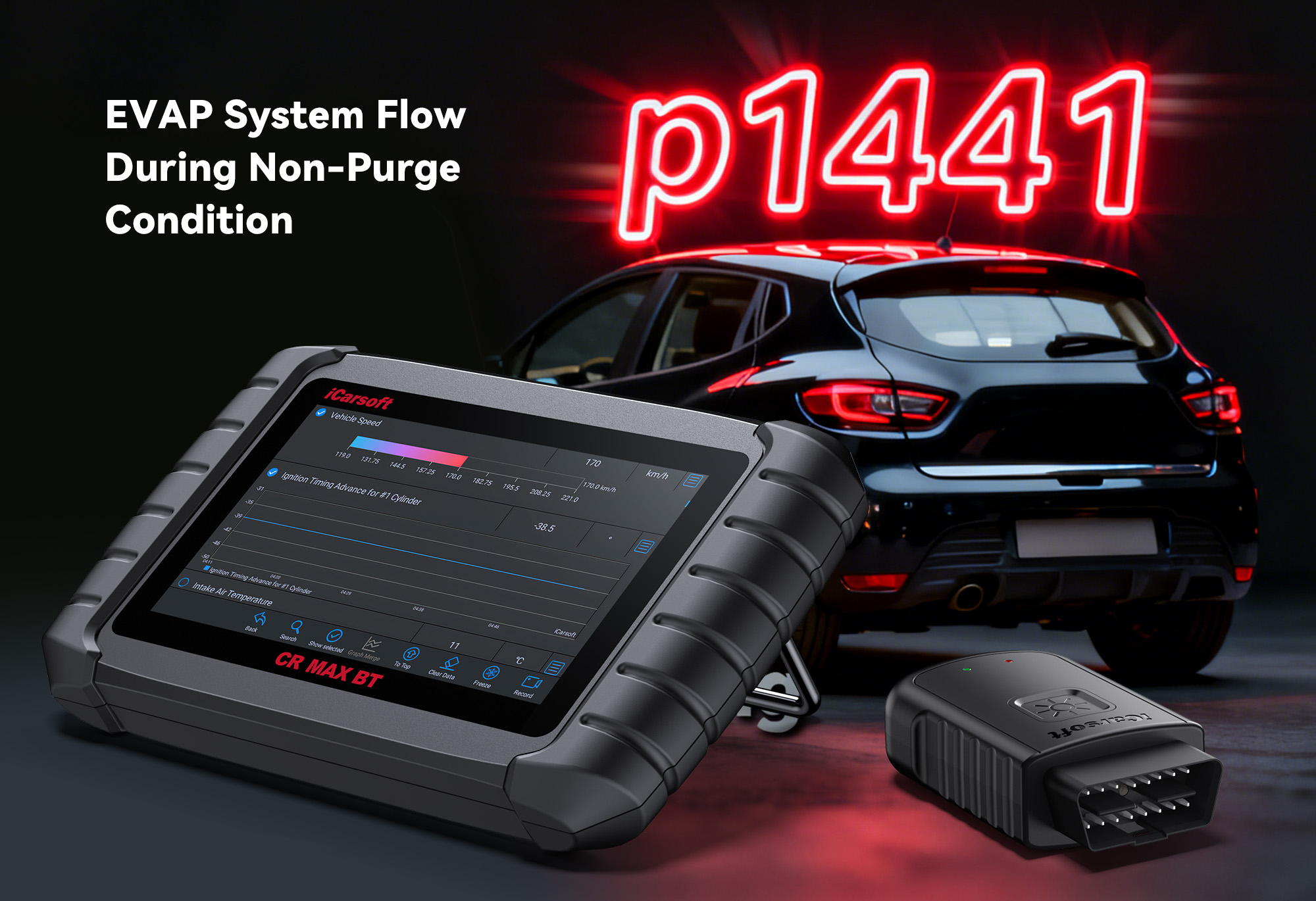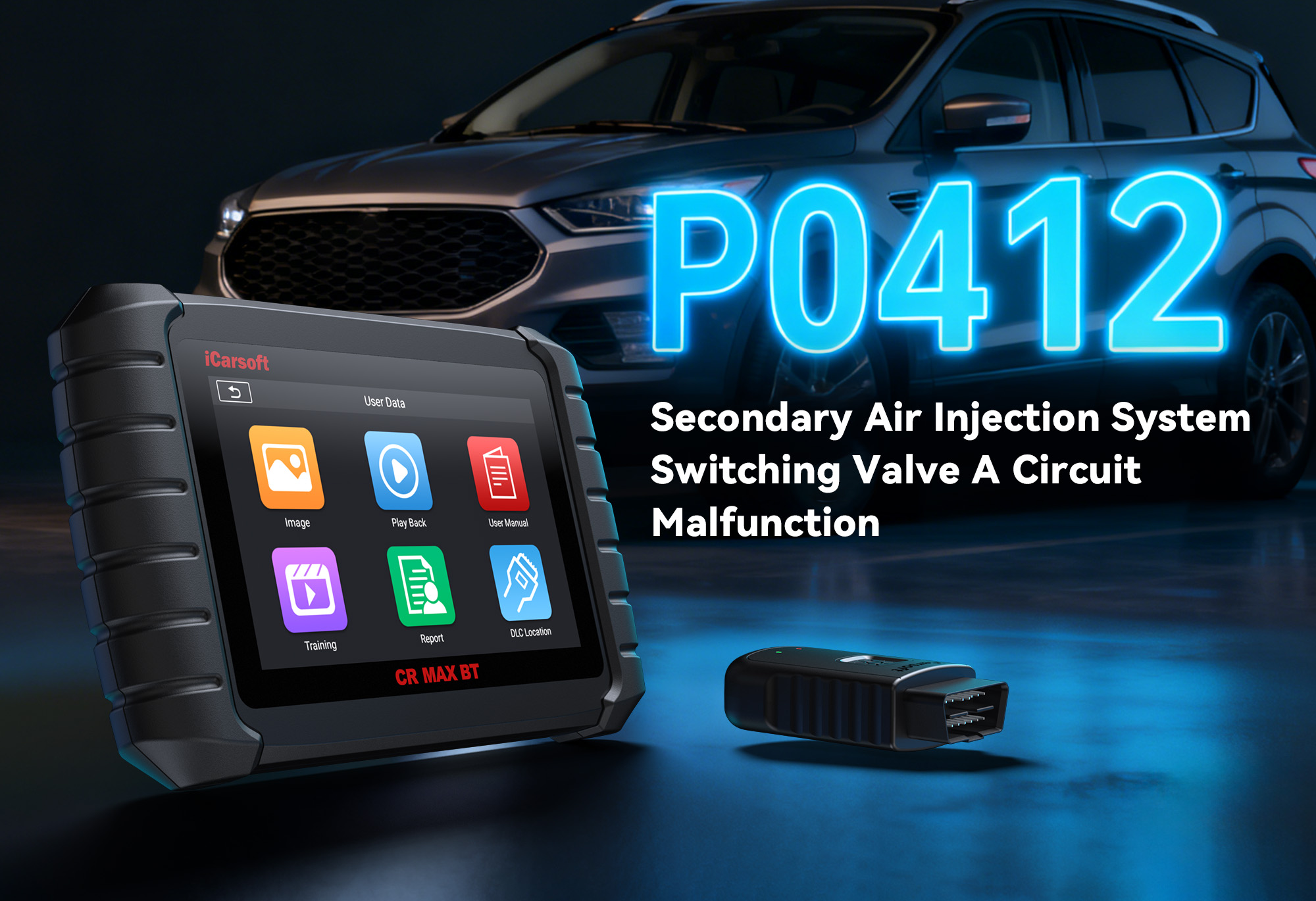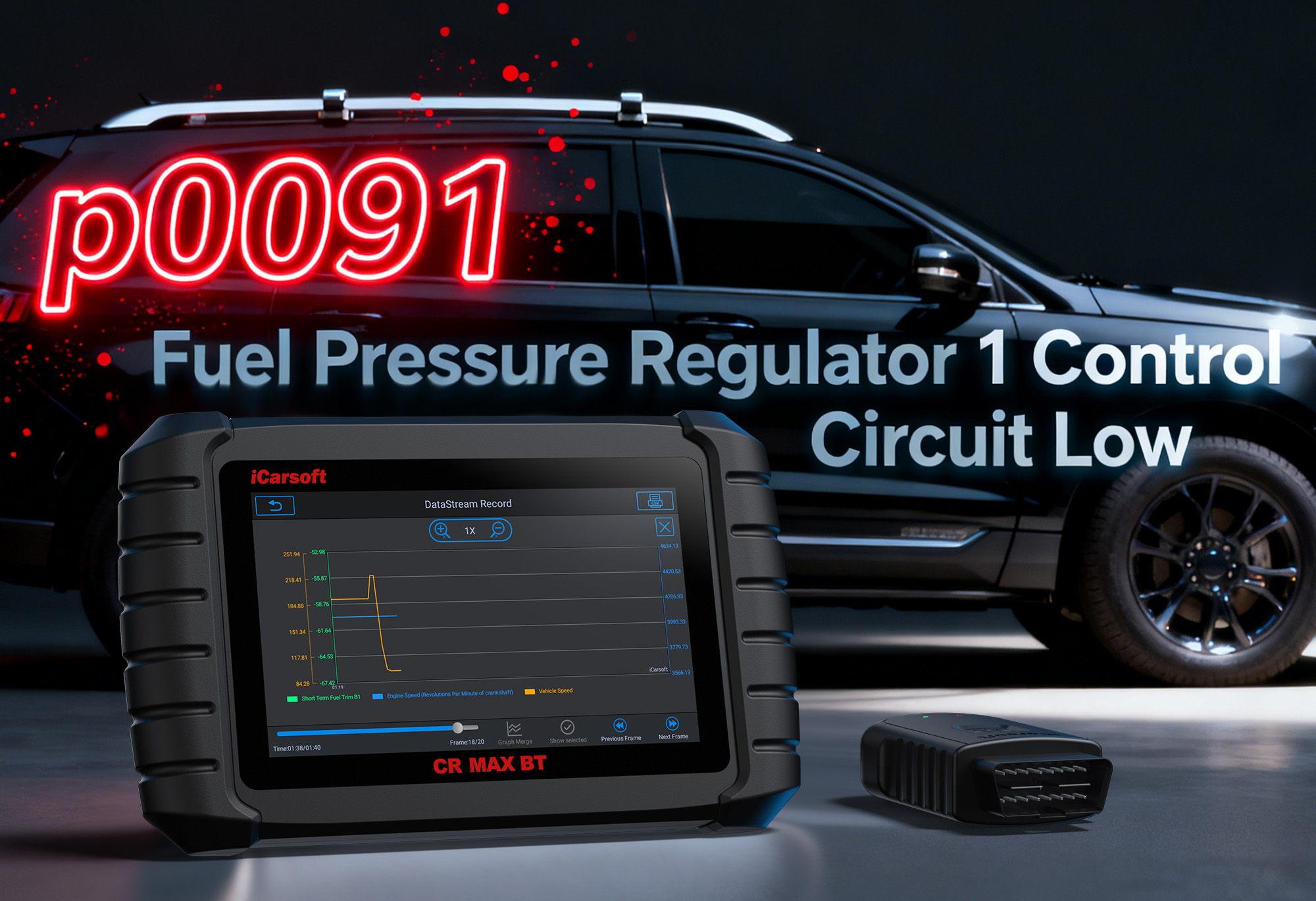P1705 Code: Transmission Range Sensor Fault – What It Means & How to Fix It (iCarsoft CR MAX Guide)
If your check engine light illuminates and a scan reveals code P1705, you’re dealing with a critical issue in your vehicle’s transmission range detection system. This manufacturer-specific code is most common in Nissan/Infiniti (e.g., Altima, Rogue, Q50) and GM (Chevrolet, GMC) models, where it signals a failure in the Transmission Range Sensor (TRS) or its circuit. The TRS tells the Engine Control Module (ECM) and Transmission Control Module (TCM) which gear the vehicle is in—without this data, you may face stuck gears, no-start issues, or erratic shifting.
Basic scanners only confirm P1705 but can’t distinguish between a faulty TRS, broken wiring, or TCM glitch. The iCarsoft CR MAX solves this with model-specific TRS specs, real-time gear monitoring, and bi-directional testing—turning transmission diagnostics into a straightforward process. This guide walks you through diagnosing and clearing P1705 step-by-step.
First: Understand P1705 – What It Is & Why It Matters
P1705’s meaning varies by manufacturer, but its core issue is a breakdown in the TRS system. Start with these fundamentals to avoid misdiagnosis:
Key Context: The Role of the Transmission Range Sensor (TRS)
Mounted on the transmission case (near the shifter cable), the TRS uses electrical contacts to send gear position signals to the ECM/TCM. Critical functions include:
-
Allowing engine start only in Park (P) or Neutral (N) (safety interlock).
-
Signaling the TCM to adjust shift points and torque converter lockup in Drive (D) or Reverse (R).
-
Updating the dashboard gear display (e.g., showing “D” when the shifter is in Drive).
Manufacturer-Specific P1705 Definitions
Nissan/Infiniti
“Transmission Range Sensor (TRS) Circuit Malfunction” – The ECM detects no valid gear signal from the TRS (e.g., no “P/N” signal during startup).
GM (Chevrolet/GMC)
“Transmission Range Switch Circuit Invalid Signal” – The TRS sends conflicting data (e.g., signals “D” and “R” at the same time).
Mitsubishi
“Neutral Safety Switch Circuit Malfunction” – Similar to TRS issues, affects start capability (vehicle thinks it’s in gear when in P/N).
Key Symptoms of P1705
Engine Won’t Start
The ECM thinks the vehicle is in gear (not P/N), so it blocks startup—one of the most common and frustrating symptoms.
Wrong Gear Display
The dashboard shows the incorrect gear (e.g., “N” when the shifter is in “D”)—signals a TRS-to-ECM communication failure.
Transmission Limp Mode
The TCM limits the transmission to 2nd or 3rd gear to prevent damage—triggers when the TRS sends no valid signals.
Erratic Shifting
Unexpected upshifts/downshifts (e.g., shifting from D to 2nd at highway speed) as the TCM guesses gear position.
Transmission Warning Light
Some vehicles (e.g., GM Silverado) illuminate a dedicated “Transmission” light alongside the check engine light.
Common Causes of P1705
Faulty TRS (Most Common)
Internal contact wear or electrical failure (e.g., burned circuit board) prevents the sensor from sending valid gear signals.
Damaged Wiring/Connectors
Frayed wires or corroded TRS connectors (from moisture) disrupt signal flow between the sensor and ECM/TCM.
Misadjusted TRS
The sensor shifts out of alignment (often after transmission work or shifter cable replacement) and can’t detect gears correctly.
Low Transmission Fluid
Insufficient fluid pressure affects TRS operation—more common in GM vehicles (e.g., Chevy Malibu, GMC Sierra).
TCM/ECM Malfunction (Rare)
The module’s TRS signal receiver fails, unable to process gear data. Only likely after ruling out all other causes.
Why iCarsoft CR MAX Is Essential for P1705
P1705 requires transmission-specific diagnostics—an area where basic scanners fail. The CR MAX excels with these critical features:
CR MAX Features for P1705 Diagnostics
Model-Specific TRS Data
Preloaded with exact TRS specs (e.g., Nissan Rogue: 0.5V in P, 4.5V in D; GM Silverado: 1.0V in R, 3.0V in D) to validate signal accuracy.
Real-Time Gear Monitoring
Displays “TRS Raw Signal” vs. “Dashboard Gear Display” side-by-side—immediately reveals mismatches (e.g., TRS says “P,” display says “D”).
Bi-Directional TRS Testing
Manually activate TRS contacts to test if the sensor sends correct signals to the TCM—no guesswork about functionality.
Transmission Fluid Checks
Reads fluid level/temperature on supported models (e.g., GM 6-speed automatics) to rule out low fluid as the cause.
TCM Health Scans
Runs automated tests to confirm if the TCM is receiving/processing TRS signals—rules out module malfunctions.
Wiring Diagrams & Component Location
Shows TRS circuit paths (sensor to TCM/ECM) and pinouts, plus step-by-step guidance to find the TRS on your vehicle.
Step-by-Step: Diagnose P1705 with iCarsoft CR MAX
-
1. Connect CR MAX & Confirm P1705
-
Plug the CR MAX into your vehicle’s OBD-II port (under the dashboard) and power it on.
-
Select your vehicle’s make, model, and year—use AutoVIN Recognition for accuracy (critical for manufacturer-specific code definitions):
-
Nissan/Infiniti: Select Nissan > [Model] > [Year] (e.g., Nissan > Rogue > 2019).
-
GM: Select GM > Chevrolet/GMC > [Model] > [Year] (e.g., GM > Chevrolet > Silverado 1500 > 2020).
-
Navigate to Transmission > Fault Codes > Read Codes to confirm P1705. Note related codes:
-
P0700: “Transmission Control System Malfunction” (indicates TCM involvement—address P1705 first).
-
P0705: Generic TRS code (may appear alongside P1705 in some GM models).
-
Tap Code Details to view the exact definition (e.g., “Nissan Altima: TRS Circuit No Signal in P/N”) and recommended first steps.
-
2. Check Transmission Fluid (Quick First Step)
Low fluid is an easy fix for P1705 in GM and Mitsubishi vehicles—start here to save time:
-
For Vehicles with Electronic Fluid Monitoring (GM/Nissan):
-
Navigate to Transmission > Live Data > Fluid Status.
-
CR MAX displays fluid level (“Normal”/“Low”) and temperature (should be 175–200°F for accurate testing).
-
For Vehicles with Dipstick:
-
Use Component Location to find the transmission dipstick (near the engine oil dipstick).
-
Check level per CR MAX’s guidance (engine running, in P/N, at operating temperature).
-
If fluid is low: Add manufacturer-recommended fluid (Nissan Matic S, GM Dexron VI). Re-scan—if P1705 clears, the issue was fluid-related. If not, proceed to Step 3.
-
3. Analyze Real-Time TRS Data
The CR MAX’s live data reveals if the TRS is sending valid gear signals:
-
Go to Transmission > Live Data > Range Sensor and select these parameters:
-
“TRS Gear Signal” (raw data: “P,” “R,” “N,” “D,” “L”).
-
“TRS Circuit Voltage” (varies by gear—check CR MAX’s model-specific specs).
-
“Dashboard Gear Display” (what the instrument cluster shows).
-
Turn the ignition to “On” (engine off, if it won’t start) and move the shifter through all gears (P → R → N → D → L). Observe the data:
-
Scenario 1: TRS Signal ≠ Dashboard Display: Misadjusted or faulty TRS (proceed to Step 4).
-
Scenario 2: TRS Voltage = 0V/5V in All Gears: Open circuit (broken wire) or shorted sensor (proceed to Step 5).
-
Scenario 3: TRS Signal Fluctuates Randomly: Corroded connector (intermittent contact—proceed to Step 5).
-
4. Test TRS Adjustment & Function (Bi-Directional Control)
If the TRS signal is mismatched, use the CR MAX to test and adjust it:
-
Step 1: Access TRS Test Mode:
-
Navigate to Special Functions > Transmission > Range Sensor Test.
-
Follow prompts: Turn ignition to “On” (engine off) and set shifter to “N.”
-
Step 2: Bi-Directional Signal Test:
-
The CR MAX “requests” specific gear signals (e.g., “Send ‘P’ Signal”).
-
Monitor “TRS Response”:
-
Valid Response: Sensor sends correct voltage (e.g., 0.5V for “P”) → TRS is functional but misadjusted.
-
No Response: Sensor is faulty (replace it—proceed to Step 6).
-
Step 3: Adjust the TRS (If Functional):
-
Loosen the TRS’s mounting bolts (don’t remove them—use CR MAX’s torque specs for reference).
-
Move the sensor slightly until the CR MAX shows “TRS Signal Matches Gear” for all positions.
-
Tighten bolts to specified torque (e.g., 8 ft-lbs for Nissan, 10 ft-lbs for GM).
-
5. Inspect TRS Wiring & Connectors
If the TRS signal is erratic or missing, check the circuit’s electrical integrity:
-
Step 1: Locate the TRS: Use Component Location (mounted on the transmission case, 6–8 pin connector).
-
Step 2: Disconnect the Connector: Inspect pins for corrosion, bending, or damage. Clean corroded pins with electrical contact cleaner.
-
Step 3: Test with CR MAX’s Multimeter:
-
Continuity Test: Set to “Ohms.” Connect probes between the TRS connector and TCM connector (use CR MAX’s wiring diagram for pin labels). No continuity = broken wire (repair with heat-shrink tubing).
-
Voltage Test: Set to “DC Voltage.” Turn ignition to “On” and connect one probe to the TRS’s “Power” pin (12V) and the other to ground. No voltage = blown transmission fuse (use Fuse Location to find and replace it).
Repair & Verify: Clear P1705 for Good
Once you’ve identified the root cause (faulty TRS, wiring, or adjustment), follow these steps to repair and confirm the fix:
-
1. Replace the TRS (If Faulty)
-
Step 1: Find the Correct Part: Use CR MAX’s Part Lookup (e.g., Nissan TRS #31918-3JA0A for 2019 Rogue, GM TRS #12677836 for 2020 Silverado).
-
Step 2: Follow Replacement Guidance:
-
Disconnect the battery (prevents TCM damage).
-
Remove the old TRS (unbolt and disconnect the connector).
-
Install the new TRS and align it per CR MAX’s adjustment guide (ensure signal matches gear positions).
-
Step 3: Reconnect the Battery: Turn ignition to “On” (don’t start) to let the TCM recognize the new sensor.
-
2. Clear P1705 & Reset the TCM
-
Navigate to Transmission > Fault Codes > Clear Codes and select P1705. Confirm deletion—this turns off the check engine/transmission light.
-
Run Special Functions > Transmission > TCM Relearn: Resets the TCM’s gear position memory, ensuring it aligns with the repaired TRS.
-
3. Verify Repairs
-
Test startup: The engine should start easily in P/N (no crank in D/R—normal safety interlock).
-
Shift through all gears: Check that the dashboard display matches the shifter position (e.g., “R” shows when shifter is in Reverse).
-
Take a 20-mile test drive (city + highway): Use CR MAX’s Data Logging to record TRS signals. Ensure smooth shifting (no limp mode or erratic changes).
-
Re-scan after the drive: No P1705 + consistent TRS data = successful fix.
Pro Tip: If P1705 is intermittent (light on/off), use the CR MAX’s Freeze Frame Data (under Fault Codes) to see when the code triggers (e.g., when shifting from P to D, or after hitting bumps). This narrows down loose wiring or a misadjusted TRS.
How to Prevent P1705 from Recurring
Use the CR MAX to maintain your transmission range system and avoid future P1705 codes:
Quarterly TRS Health Scans
Run Transmission > Special Functions > Range Sensor Health Scan to test signal accuracy—catch misalignment or early sensor wear.
Transmission Fluid Service
Follow CR MAX’s Maintenance Schedule (e.g., change fluid every 60,000 miles for Nissan, 80,000 miles for GM) to prevent low fluid-related TRS issues.
Avoid Rough Shifting
Slamming the shifter into gear misaligns the TRS over time. Use smooth, deliberate shifts to preserve sensor alignment.
Scan for TSBs
The CR MAX checks for manufacturer Technical Service Bulletins (e.g., Nissan TSB NTB20-075 for TRS adjustments, GM TSB 18-NA-355 for wiring repairs).
Can I Drive with P1705?
Only if absolutely necessary—and with extreme caution. Here’s why:
-
No-Start Risk: The vehicle may suddenly refuse to start (even in P/N) if the TRS signal fails completely.
-
Limp Mode: The TCM may force the transmission into limp mode (only 2nd/3rd gear), making highway driving unsafe.
-
Erratic Shifting: Unexpected gear changes can cause loss of control—especially in traffic or on hills.
-
Transmission Damage: Prolonged driving with P1705 strains the TCM and transmission components (e.g., clutch packs), leading to costly repairs ($1,000+).
If you must drive, stick to short trips (e.g., to a repair shop) and avoid highways, hills, or heavy traffic. Fix P1705 immediately.
Summary Table: P1705 Diagnosis Workflow (CR MAX-Powered)
|
Step
|
Action with iCarsoft CR MAX
|
Goal
|
|
1
|
Read Codes + Code Details (manufacturer-specific definition)
|
Confirm P1705 and rule out related TCM codes (P0700)
|
|
2
|
Live Data > Fluid Status; check dipstick (if needed)
|
Fix low fluid (easy, common cause in GM/Mitsubishi)
|
|
3
|
Live Data > Range Sensor; compare TRS signal vs. dashboard
|
Isolate issue (misadjustment, faulty sensor, wiring)
|
|
4
|
Special Functions > Range Sensor Test; bi-directional control
|
Test TRS functionality and adjust if needed
|
|
5
|
Multimeter > Continuity/Voltage Tests; Wiring Diagrams
|
Fix broken wires or corroded connectors
|
|
6
|
Part Lookup > TRS replacement; TCM Relearn; Data Logging
|
Replace faulty TRS and verify repair
|
Final Thoughts
P1705’s transmission-related symptoms (no start, stuck gears) can be stressful, but the iCarsoft CR MAX simplifies diagnosis and repair. By combining model-specific TRS data, bi-directional testing, and step-by-step guidance, it helps you fix the real issue—whether it’s low fluid, a misadjusted sensor, or broken wiring—without guessing.
For Nissan/Infiniti, GM, or Mitsubishi owners, the CR MAX is the key to resolving P1705 quickly, restoring transmission functionality, and avoiding costly dealer visits. Don’t let a range sensor fault leave you stranded—use the CR MAX to get back on the road with confidence.
FAQs About P1705 Code
Q: Is P1705 only a Nissan/GM code?
A: No—while most common in Nissan/Infiniti and GM, it also appears in Mitsubishi (labeled “Neutral Safety Switch Circuit Malfunction”) and some older Ford models. The CR MAX’s manufacturer-specific data ensures accurate diagnosis across makes.
Q: How much does it cost to fix P1705?
A: $80–$250 for a TRS replacement (OEM parts); $50–$150 for wiring/connector repairs; $100–$300 for TCM reprogramming (if needed). DIY fixes with the CR MAX save $150–$400 vs. dealer labor.
Q: Will a bad battery cause P1705?
A: Yes—low battery voltage (below 12V) can disrupt TRS signal transmission, triggering intermittent P1705. Use the CR MAX’s “Battery Voltage Test” to check; replace batteries older than 3 years.
Q: Do I need to reset the TCM after fixing P1705?
A: Yes—critical for Nissan/GM. The TCM stores old TRS data; without a relearn (via CR MAX’s “TCM Relearn” function), P1705 may return within days, even if the TRS is fixed.





